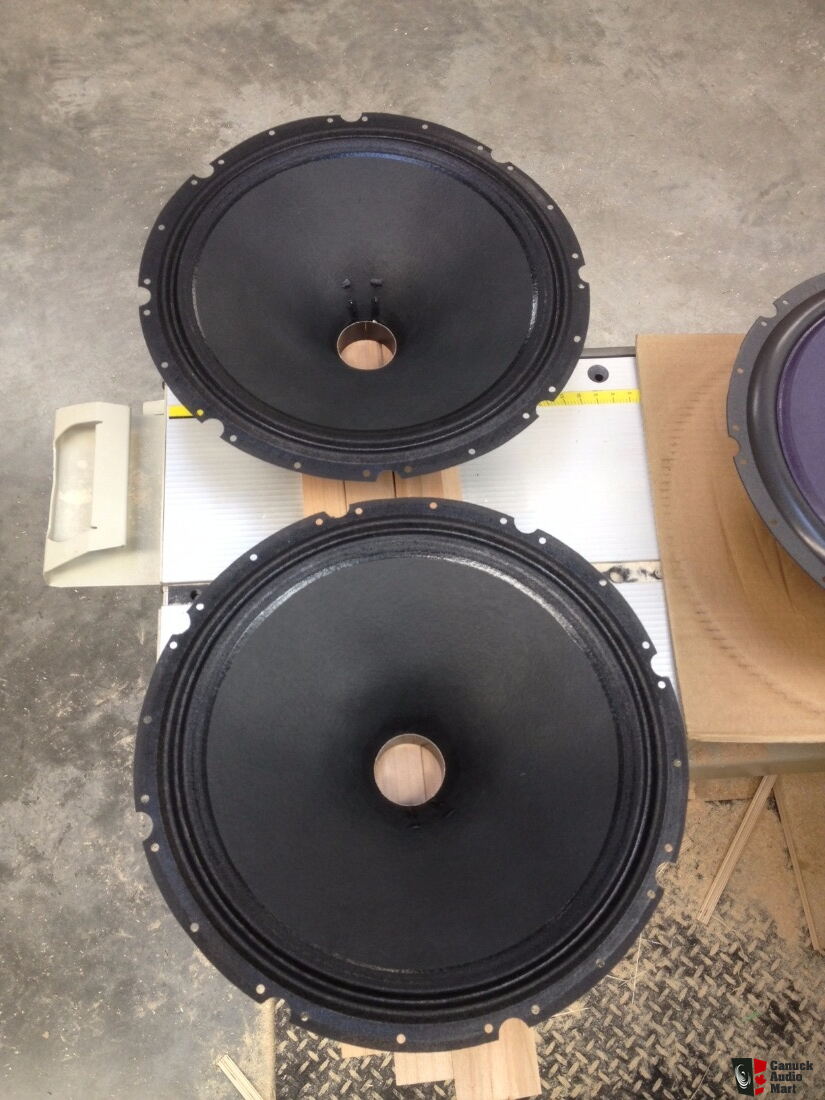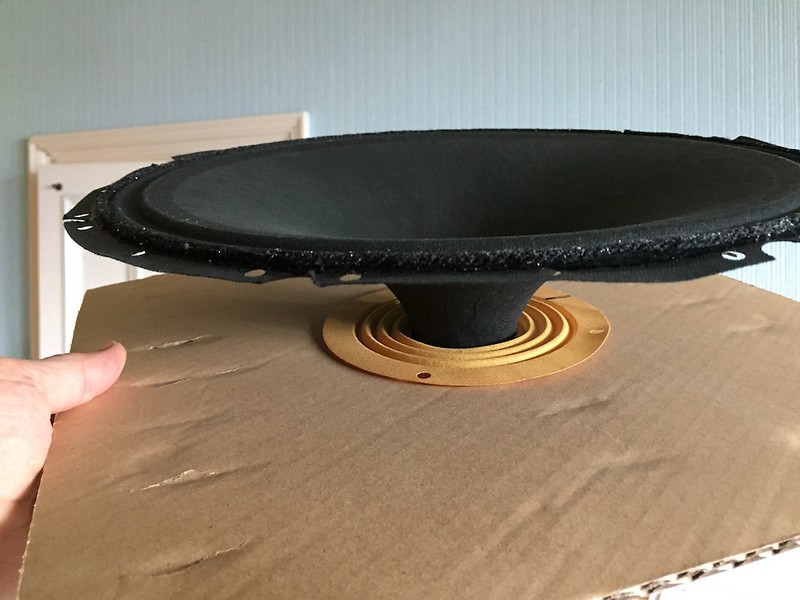I've been playing around with measurements from my Tannoy cabinets + drivers, and so far the measurements haven't looked anything like the model, and this has made me realise that i'm actually guessing quite a bit about the T/S parameters for my drivers.
The history of these drivers is that they were 15 inch HPDs, but have been re-coned as Golds, so they have the light weight cones, solid edges/string but I presume the HPD horn and magnets. I've also got HPD crossovers for them, again no idea if they would need modifying for Gold use, or whether they have in fact had modifications made to them.
So lots of unknowns, and hence lots of DIY fun to explore exactly what is going on.
The T/S parameters I used for modelling were taken from http://www.44bx.com/tannoy/Tannoy_ts.html
Having decided these were probably suspect, i've invested in a DATS V3 setup, and made some test measurements, and it looks to me like these drivers have a totally different F(s) than the above web site suggested, Q is totally different, as is V(as). I used the 'add mass' technique to measure V(as) and it's rather dependent on the size of the driver, and i'm not totally sure what size is right for these, i've gone with 340mm as the cone diameter certainly isn't 15 inches.
Anyhow, here's a link to the DATS image with the calculated numbers:
 Driver by Cesare Ferrari, on Flickr
Driver by Cesare Ferrari, on Flickr
Of course it could totally be operator error, that i've got something daft going on when measuring, and that these are misleading. So, has anyone put some 15 inch golds through a DATS type analysis and got numbers to compare these against?
I guess the first question is really, is F(s) of 57Hz reasonable (certainly higher than i'd expected)? BTW, the second driver measures give or take the same
The history of these drivers is that they were 15 inch HPDs, but have been re-coned as Golds, so they have the light weight cones, solid edges/string but I presume the HPD horn and magnets. I've also got HPD crossovers for them, again no idea if they would need modifying for Gold use, or whether they have in fact had modifications made to them.
So lots of unknowns, and hence lots of DIY fun to explore exactly what is going on.
The T/S parameters I used for modelling were taken from http://www.44bx.com/tannoy/Tannoy_ts.html
Having decided these were probably suspect, i've invested in a DATS V3 setup, and made some test measurements, and it looks to me like these drivers have a totally different F(s) than the above web site suggested, Q is totally different, as is V(as). I used the 'add mass' technique to measure V(as) and it's rather dependent on the size of the driver, and i'm not totally sure what size is right for these, i've gone with 340mm as the cone diameter certainly isn't 15 inches.
Anyhow, here's a link to the DATS image with the calculated numbers:
 Driver by Cesare Ferrari, on Flickr
Driver by Cesare Ferrari, on FlickrOf course it could totally be operator error, that i've got something daft going on when measuring, and that these are misleading. So, has anyone put some 15 inch golds through a DATS type analysis and got numbers to compare these against?
I guess the first question is really, is F(s) of 57Hz reasonable (certainly higher than i'd expected)? BTW, the second driver measures give or take the same


 PXL_20210317_153221772
PXL_20210317_153221772 PXL_20210317_153230319
PXL_20210317_153230319 PXL_20210317_153236534
PXL_20210317_153236534 PXL_20210319_045207585
PXL_20210319_045207585 PXL_20210319_060655121
PXL_20210319_060655121
